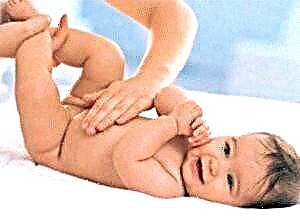
The little man will be born very soon. Before this significant life event, he is only a few weeks away. This article will tell you about the peculiarities of fetal development at 34 weeks.
What does it look like?
The appearance of the child by this time changes somewhat. So, the fetus already looks more like a newborn baby. Its forehead and nose are not as flat as they used to be and are quite well defined. The baby's cheeks become more plump. This is facilitated by the growth of fat deposits under the skin.
Layers of fatty tissue also appear on other parts of the fetus. It accumulates mainly in the abdomen, buttocks, and extremities. By the 34th week of pregnancy, the child's body already contains about 6% fat.
It is very important that the adipose tissue continues to form. It is she who protects the child's body from the negative effects of the external environment. As soon as the baby is born, he will immediately need subcutaneous fat in order to simply not freeze.

In addition to brown fat, which prevails in the fetus at this time, it also has white fat. Brown adipose tissue is very important. It is much easier to metabolize and gives the body heat in the form of more energy.
The limbs of the fetus are no longer growing as fast as in the previous weeks of pregnancy. The main task of the third trimester is the weight gain of the fetus and the final formation of all vital organs, and not simple growth in length.
The accumulation of fat under the skin of a child contributes to a change in body proportions. Cute dimples appear on the child's torso. The ulnar and popliteal fossa are already formed. Each handle has small fingers, the terminal phalanges of which cover the nails. Every day, the density of small marigolds increases, and they become denser.
The baby's skin looks pink with a slight gray tint due to raw vernix lubricant. The number of vellus hairs (lanugo) decreases with each subsequent day of pregnancy. However, hair on the head grows quite intensively. The growth of eyelashes and eyebrows also continues.


A child has a lot of wrinkles on his skin, since he is constantly in the aquatic environment. After birth, the skin will become smoother and smoother.
Movement
The motor activity of the fetus at this stage of pregnancy changes somewhat. The kid has already grown enough in length and even managed to gain weight. Such a relatively large size of the fetus makes it difficult for its active movement in the uterus.
The baby at this time usually kicks with his legs on the walls of the uterus. He can do this quite intensively. That is why his mother feels that the child is pushing hard. To assess physical activity, doctors use special standards. These averaged indicators allow us to assess how comfortable the baby feels in the mother's womb.

If, for some reason, the baby has become stronger and kicks more often, then this may be due to the fact that he is experiencing some discomfort. A significant increase in the motor activity of the fetus is an important reason for consulting an obstetrician-gynecologist who monitors the course of pregnancy.
It is believed that in 12 hours the baby should make at least 10 active thrusts. Doctors note that these indicators are also averaged. The motor activity of the fetus is considered very individual.
In this matter, the main thing to remember is that if a pregnant woman begins to notice a decrease or a significant increase in the baby's pushes in her abdomen, then she should definitely discuss this issue with her doctor. Also, you should not hesitate to seek medical help if the expectant mother has severe cramping abdominal pain or leakage of amniotic fluid. At this stage of pregnancy, the risk of childbirth is quite high. Better in such a situation to play it safe and seem to specialists.

Anatomical features
The final period of pregnancy or the third trimester is a very important period. At this time, the fetus's body must fully prepare for an independent life outside the mother's womb. In order for the baby to be able to live and develop independently in the external environment, it is very important that all his internal organs are well formed and able to function.
By this time, the child has already grown up enough. To measure his body size, doctors perform special ultrasound examinations. Through these simple diagnostic methods, a specialist can obtain quite a lot of valuable information about how the intrauterine development of the fetus proceeds.
The basic parameters that are determined during the study are the length of the child's body and its weight. In addition to these basic indicators of child development, the examiner can measure the size of large parts of the baby's body. He enters all the measurements obtained in the conclusion form, which must remain in the medical card of the pregnant woman.


Each stage of pregnancy is characterized by certain norms in the parameters determined in such a study. The table of norms for these clinical indicators is presented below.

How is it developing?
The child's body at 33-34 weeks of gestation is almost completely ready for the upcoming work. The cardiovascular and nervous system is not only formed, but also actively working. The baby, who has been "living" in the mother's belly for several months, has its own sensations. The development of the sense organs contributes to their appearance. They act as analyzers that the body uses to form its own attitude to the impact of any environmental factor.
The ability to adapt is an essential skill that a fetus needs to be able to live independently outside the mother's womb. Adaptive capacity is not formed without the full development of the nervous system.
One of the important sensations that the fetus can feel at 34 weeks is the perception of various sounds. The kid, who weighs only a couple of kilograms, is already quite good at distinguishing the voices of his parents..
Moreover, the voice of the dad at this stage of intrauterine development even more like the child than the mother's. The thing is that at this stage of development of the auditory analyzer, the fetus is better susceptible to lower and deaf sounds.

Also, the baby is able to distinguish between light and darkness. The child can already open or close the eyes. During the day, when the fetus is predominantly very active, the baby's eyes are open. At night, the eyelids close tightly.
Bright rays of light that fall into the eyes of the child cause a reflex response in him. In this case, the fetus immediately closes its eyes. In some cases, if the insolation is quite pronounced and prolonged, then it contributes to the occurrence of discomfort in the baby. The baby can show his "dissatisfaction" with an increase in physical activity.
The child developed the ability to taste a few weeks ago. However, the taste buds on the tongue continue to develop. The baby can taste the amniotic fluid. Swallowing amniotic fluid is a kind of training not only for the digestive system of the fetus, but also for the development of respiratory muscles.
After the baby has "drunk" amniotic fluid, he usually hiccups. Hiccups in the fetus are quite a physiological phenomenon.... It is also necessary for the baby so that the respiratory muscles and diaphragm "train" for the upcoming independent life.


By 34 weeks of gestation, a baby already has the ability to perceive pain stimuli. Such a possibility of the emergence of responses to pain appeared in the fetus due to a rather developed already peripheral nervous system. A baby born at 34 weeks is viable. Viability, first of all, is due to the presence of the fetus's own heartbeat and blood circulation, as well as the ability of the lungs to breathe independently.
Every day, the baby's lung tissue develops. The bronchopulmonary trunk becomes more and more branched. The lumen and diameter of the bronchi of different caliber gradually change.
It is important that in the pulmonary vesicles - the alveoli of the fetus, a special substance is formed - a surfactant. It is necessary so that the lungs simply do not "stick together" when breathing. Unfortunately, a person cannot breathe without this substance. The little heart of a baby already has almost the same structure as that of an adult, but there is one rather important difference.
In the fetal heart, there is a small opening between the atria. It is necessary for the fetus to carry out blood flow during the period of its intrauterine life. This hole should close on its own after the baby is born and begins to breathe on its own.


Location in the womb
The position of the fetus in the uterus is a very important indicator. The closer the delivery is, the more important this factor is. The choice of delivery technique depends on how the fetus is located in the mother's womb.
Doctors call the location of the fetus in the uterus presentation. There are more and less favorable presentation options. It is determined by where the largest parts of the baby's body are located. Doctors necessarily assess where the head, pelvis and limbs of the fetus are located. After that, they already conclude about the presentation in which the baby is.
The most favorable option for the position of the child in the uterus is cephalic presentation. In this position, the baby's head is at the bottom. During childbirth, she will move first through the birth canal. After the head is born, the rest of the body will be born easier, as they are smaller in size. With this presentation, the risk of possible birth injuries with a properly performed obstetric benefit during childbirth is quite low.

The breech presentation is less favorable. In this case, the pelvic end of the fetus is directed first towards the birth canal. This variant of presentation is dangerous because various injuries and injuries often occur during childbirth.
To minimize the risk of such injuries, doctors are forced to resort to a surgical method of obstetrics - cesarean section.
Breech presentation is a rather unfavorable variant of the location of the fetus in the uterus. In this case, the baby "enters" the small pelvis of his mother's buttocks. At the same time, his head is at the top. Such a "reverse" arrangement of the baby in the womb makes it almost impossible for him to be born without causing a birth injury. Most women who have carried their babies in a breech position have had a caesarean section.
In transverse presentation, the baby is located across the longitudinal line of the birth canal. In this case, his independent unimpeded birth is impossible. As an obstetric benefit, doctors are forced to perform a caesarean section.

For information on how the fetus develops at 34 weeks of gestation, see the next video.



